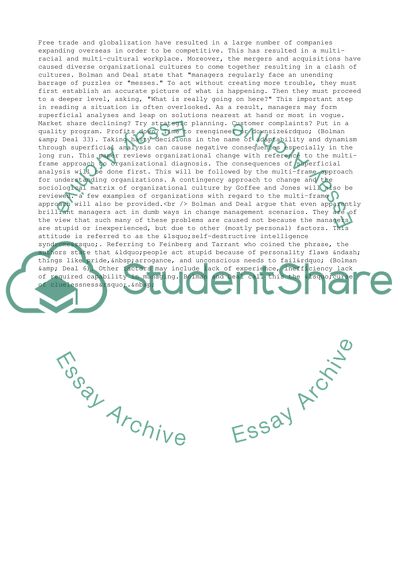Cite this document
(Multi-Frame Approach by Bolman and Deal, Contingency Theory Coursework, n.d.)
Multi-Frame Approach by Bolman and Deal, Contingency Theory Coursework. Retrieved from https://studentshare.org/management/1555756-change-management-ass-2
Multi-Frame Approach by Bolman and Deal, Contingency Theory Coursework. Retrieved from https://studentshare.org/management/1555756-change-management-ass-2
(Multi-Frame Approach by Bolman and Deal, Contingency Theory Coursework)
Multi-Frame Approach by Bolman and Deal, Contingency Theory Coursework. https://studentshare.org/management/1555756-change-management-ass-2.
Multi-Frame Approach by Bolman and Deal, Contingency Theory Coursework. https://studentshare.org/management/1555756-change-management-ass-2.
“Multi-Frame Approach by Bolman and Deal, Contingency Theory Coursework”. https://studentshare.org/management/1555756-change-management-ass-2.


